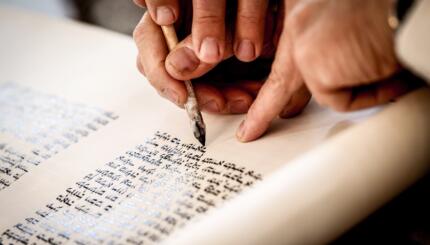Since 2006, Slate editor Daivd Plotz has been “blogging the Bible.” Unsettled by reading the story of the rape of Dinah, he feels cheated that what he knows of the bible is simply:
Adam and Eve, Cain vs. Abel, Jacob vs. Esau, Jonah vs. whale, 40 days and nights, 10 plagues and Commandments, 12 tribes and apostles, Red Sea walked under, Galilee Sea walked on, bush into fire, rock into water, water into wine. And, of course, I absorbed other bits of Bible everywhere—from stories I heard in churches and synagogues, movies and TV shows, tidbits my parents and teachers told me. All this left me with a general sense that I knew the Good Book well enough, and that it was a font of crackling stories, Jewish heroes, and moral lessons. (MORE)
He is shocked to learn that there are other stories, some with violence and evil, that he was never taught. So he decides to read the bible from the beginning and blogs his thoughts.
Now Plotz is in Israel “digging the Bible,” trying to get as close to his readings as possible. This week he writes about visiting the Shrine of the Book, where the Dead Sea Scrolls reside, and traveling to Qumran, where the ancient texts were found.
Only one problem. He writes about the Essenes, the “weirdo cult that saved the Bible.” However most scholars, and our article on the scrolls, believe that this sect could not have written the documents.
So who wrote the Dead Sea Scrolls?


